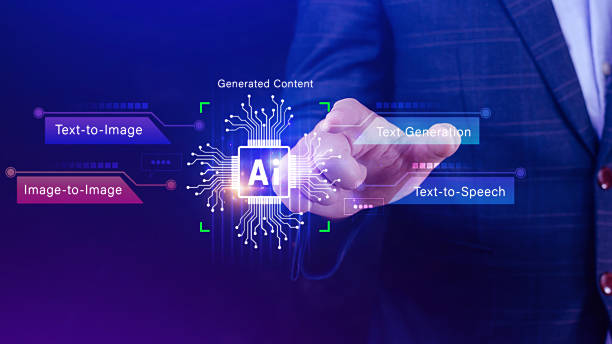Introduction to AI Assistant
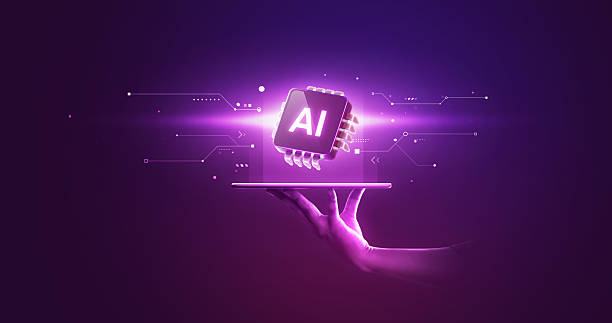
Today’s world is rapidly transforming, and one of the pioneers of this change is the concept of #Artificial_Intelligence, which has emerged in various forms such as #Digital_Assistant.
An AI assistant, sometimes referred to as a smart system, is software that uses complex artificial intelligence algorithms to perform various tasks, answer questions, and learn from user interactions.
These assistants not only help users with daily tasks but also play a significant role in specialized fields.
The emergence of this advanced technology began in the 1950s with initial ideas in machine intelligence, but recent advancements in computational power and access to vast data have enabled the creation of assistants with unprecedented capabilities.
From scheduling meetings to controlling smart home devices, these intelligent tools have gradually become an indispensable part of modern life.
The main goal of an AI assistant is to simplify processes, increase productivity, and provide a personalized experience to the user.
By understanding natural language and analyzing behavioral patterns, these assistants can actively anticipate user needs and provide appropriate solutions, capabilities that are valuable in both individual and organizational domains.
Did you know that 94% of a company’s first impression relates to its website design?
Rasaweb, by offering professional corporate website design services, helps you create the best first impression.
✅ Create a professional and reliable image for your brand
✅ Easier attraction of potential customers and improvement of online standing
⚡ Get free corporate website design consultation
Types and Broad Applications of AI Assistants

AI assistants today exist in various forms and applications, each designed for specific purposes.
Among the most common are voice assistants like Siri, Alexa, and Google Assistant, which allow users to access information, control devices, or even make purchases with voice commands.
These voice assistants, integrated into smartphones, smart speakers, and cars, have significantly simplified the user experience.
In addition to general voice assistants, more specialized types of AI assistants have also been developed for use in specific industries.
For example, in the healthcare sector, AI assistants help doctors analyze medical data, diagnose diseases, and provide treatment plans.
In the financial sector, smart assistants can help clients manage budgets, provide investment advice, and conduct banking transactions.
Also, in customer service, AI-powered chatbots respond to customer inquiries 24/7 and improve the user experience.
An AI assistant can also play a role in work environments, from managing emails and calendars to preparing reports and analyzing data; these tools help increase efficiency and reduce employee workload.
This diversity in applications demonstrates the enormous potential of AI assistants to transform almost all aspects of our life and work.
These smart systems, with their continuous learning ability and adaptability, are capable of performing tasks that were previously only possible with human intervention.
How AI Assistants Transform Daily Life?
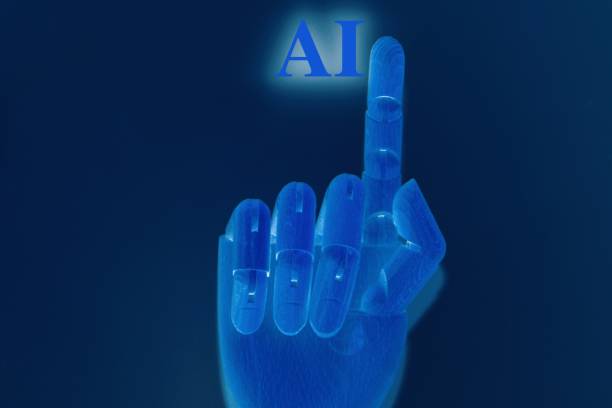
The AI assistant is no longer just a fancy tool; it has become an integral part of many people’s daily lives.
One of the most important practical applications of a smart assistant is the ease it provides in time management and organizing personal tasks.
For example, you can ask your assistant to set a reminder for tomorrow’s meeting or create a shopping list for you.
These capabilities help users to be more productive and prevent forgetting important tasks.
In the smart home context, the AI assistant acts as a control center.
With voice commands, you can turn lights on or off, adjust the thermostat, check door locks, or even activate the coffee maker.
This level of control brings unparalleled convenience and gives homes a futuristic aspect.
Beyond household tasks, the AI assistant can also be highly efficient in information retrieval.
Instead of typing into search engines, you can verbally ask your questions and receive quick and accurate answers.
This is particularly useful for finding restaurants, checking the weather, or getting instant news updates.
The entertainment aspect of these assistants is also noteworthy; they can play music, open podcasts, or even tell jokes.
The ability of a smart assistant to learn user preferences and personalize experiences makes it a true companion.
By simplifying access to information and performing daily tasks, these assistants free up valuable time for users to engage in more important and creative activities.
Next, we compare some of the most popular AI assistants in terms of their capabilities and main platforms:
| Assistant Name | Developing Company | Main Platforms | Key Capabilities |
|---|---|---|---|
| Siri | Apple | iOS, iPadOS, macOS, watchOS, tvOS, HomePod | Deep integration with Apple ecosystem, HomeKit control, sending messages and calls |
| Google Assistant | Android, iOS, Google Home/Nest devices, Chrome OS, Android Auto | Integration with Google search engine, extensive general knowledge, control of various smart devices | |
| Alexa | Amazon | Amazon Echo devices, Fire OS, Various third-party devices | Online shopping from Amazon, diverse skills, smart home control |
| Cortana | Microsoft | Windows, Microsoft 365, Xbox (some features) | Integration with Microsoft Office products, scheduling and reminders |
Challenges and Ethical Considerations in AI Assistant Development
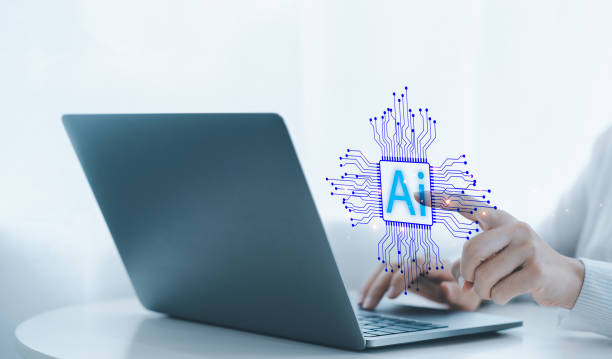
As much as AI assistants bring numerous benefits, they also raise important challenges and ethical issues that require serious attention.
One of the biggest concerns is the issue of data privacy.
AI assistants collect and process vast amounts of personal user data to provide personalized services.
This information includes voice conversations, behavioral patterns, interests, and even sensitive banking or health data.
The question is, how are this data stored, protected, and used? Can companies share this information with third parties? Privacy breaches can have serious consequences for users.
Another issue is bias or discrimination in artificial intelligence.
AI assistant algorithms are trained on data collected and labeled by humans.
If this data contains racial, gender, or social biases, the AI assistant will also reflect and even amplify these biases.
This can lead to discrimination in decisions, from job recommendations to loan approvals.
Furthermore, the issue of transparency and explainability in AI algorithms is crucial.
Users should be able to understand why an AI assistant has reached a specific conclusion or provided a particular recommendation.
A lack of transparency can lead to a lack of public trust.
Additionally, the impact of AI assistants on employment is also a concern.
The automation of tasks by AI assistants can lead to a reduced need for human labor in some jobs.
This requires planning for training and retraining the workforce for new jobs.
Security issues are also vital; AI assistants can be targets of cyberattacks, leading to unauthorized access to user information or even control of connected devices.
Developers and users must always use strong security protocols to protect data and systems.
Addressing these challenges and ethical considerations is essential to ensure the responsible and sustainable development of AI assistants.
Are you tired of your company’s website not meeting your expectations? Don’t worry anymore! With Rasaweb’s corporate website design services:
✅ Your brand’s credibility and professionalism will increase.
✅ You will attract more customers and sales leads.
⚡ Get a free website design consultation now to get started!
AI Assistant and the Future of Work

The future of work is increasingly intertwined with the advancements of AI assistants.
This technology not only changes how tasks are performed but also impacts the nature of jobs and the skills required in the workforce.
Many repetitive and rule-based tasks previously performed by humans can now be effectively carried out by an AI assistant.
This includes data management, answering frequently asked customer questions, scheduling meetings, and even preliminary document analysis.
Consequently, these smart tools can help companies increase productivity and reduce operational costs.
But this does not mean the end of work for humans; rather, it signifies a change in the nature of work.
An AI assistant can act as a smart collaborator, helping professionals in various fields focus on more complex and creative tasks.
For example, in the marketing sector, an AI assistant can analyze customer data and create personalized advertising campaigns, while marketing professionals focus on overall strategies and developing creative ideas.
In medicine, these assistants can help with early disease diagnosis and analysis of medical images, but the final decision-making and interaction with patients will still rest with physicians.
This transformation requires reskilling and upskilling in the workforce.
Skills such as critical thinking, complex problem-solving, creativity, emotional intelligence, and interpersonal collaboration will become increasingly important, as these are skills where AI is weaker.
Companies and governments must invest in training programs to prepare employees for this future.
AI assistants have significant potential to create new jobs and alter existing career paths.
Instead of complete replacement, AI will act as a powerful tool to enhance human capabilities and create new opportunities for innovation and growth, thereby steering the future of work towards a synergistic collaboration between humans and machines.
Underlying Technologies of AI Assistants

The power and efficiency of an AI assistant depend on a set of advanced AI technologies that work together to provide extraordinary capabilities.
The core of these assistants is Natural Language Processing (NLP).
NLP enables the AI assistant to understand, interpret, and even generate human spoken and written language.
This includes the ability to recognize voice commands, understand the meaning of complex sentences, and respond in a natural and relevant manner.
Advancements in NLP, especially with the emergence of Large Language Models (LLMs) like GPT-3 and BERT, have enabled AI assistants to have more complex and accurate conversations and perform various linguistic tasks.
The next is Machine Learning (ML), and specifically its subfield, Deep Learning.
These technologies allow the AI assistant to learn from data and improve its performance over time.
With each user interaction, the AI assistant collects new data that is used to train its models, making the smart assistant more experienced in understanding user preferences, anticipating needs, and providing more accurate responses.
Deep neural networks, which are a core component of deep learning, enable assistants to identify complex patterns in vast amounts of data.
Speech Recognition technology is also vital for voice assistants.
This technology converts audio signals into text, allowing the AI assistant to receive user voice commands and questions.
This is particularly important for hands-free and eyes-free interactions.
Furthermore, Text-to-Speech (TTS) systems are essential for converting the assistant’s textual responses into audible speech.
This set of technologies, together, enables an AI assistant to intelligently communicate with humans, learn from them, and provide diverse services that are increasingly becoming an inseparable part of our daily lives.
The continuous development of these technologies promises more powerful and intelligent AI assistants in the future.
The Role of AI Assistants in Education and Learning
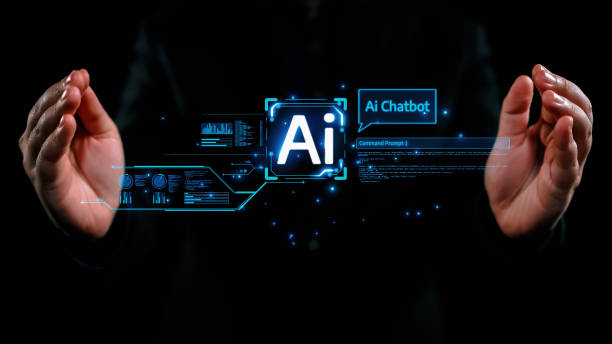
AI assistants have enormous potential to revolutionize the field of education and learning.
These smart tools can help students, teachers, and educational institutions in various ways to make the learning process more personalized, efficient, and accessible.
One of the most important applications is providing personalized learning.
An AI assistant can analyze each student’s learning style, pace of progress, and strengths and weaknesses.
Based on these analyses, it can suggest appropriate educational content, exercises, and resources that best match each student’s individual needs.
This helps students progress at a pace and method that is most suitable for them.
Furthermore, AI assistants can act as virtual private tutors.
They are able to answer students’ questions, explain complex concepts, and even provide immediate feedback on assignments.
This capability is particularly useful for students who need additional support or study outside of class hours.
An AI assistant can also help teachers in managing and organizing educational tasks.
From automatic grading of exam papers to providing student progress reports, these assistants can reduce the workload of teachers and allow them to dedicate more time to teaching and interacting with students.
In academic research and projects, AI assistants can help students in searching for resources, summarizing lengthy texts, and even assisting in writing scientific papers.
This enables students to access a wider range of information and accelerate the research process.
This technology can also make education more accessible for individuals with special needs, for instance, by providing text-to-speech or assisting students with learning disabilities.
Overall, AI assistants have become a powerful tool for enhancing the quality and accessibility of education, and their potential for transforming this field continues to expand.
In the table below, some of the key benefits of using AI assistants in the education and learning process are mentioned:
| Aspect | Description |
|---|---|
| Personalized Learning | Adjusting educational content and learning pace based on each student’s needs and style. |
| 24/7 Support | Providing answers to questions and assistance at any time, beyond class hours. |
| Instant Feedback | Quick correction of assignments and exercises with constructive feedback. |
| Reduced Teacher Workload | Automating administrative and grading tasks, freeing up time for active teaching. |
| Increased Accessibility | Enabling learning for individuals with special needs and in remote areas. |
| Learning Data Analysis | Providing insights into student progress and the effectiveness of teaching methods. |
Security and Privacy in Using AI Assistants

As the AI assistant becomes a more pervasive tool in our lives, the issue of data security and privacy gains increasing importance.
These assistants require access to a large volume of personal information for their proper functioning, including conversations, location, interests, and even biometric data.
This extensive data collection raises concerns about how this information is protected against unauthorized access and misuse.
Companies developing AI assistants are obliged to adhere to high security standards, including data encryption during transmission and storage, and implementing security protocols to prevent intrusions.
One of the main concerns is the potential use of recorded voice data.
Although companies claim that this data is used to improve the AI assistant’s performance, there is a possibility that these recordings might be unintentionally heard or analyzed.
For this reason, users should be aware of their device’s privacy settings and apply the necessary controls to limit data collection.
For instance, many assistants allow users to delete their conversation history and voice recordings.
Furthermore, users need to be aware of phishing and social engineering attacks that might be carried out through AI assistants.
Hackers might try to obtain sensitive user information by impersonating the assistant or sending fake messages.
The best practice for users is to: 1.
Pay attention to the privacy policies of AI assistant manufacturers.
2.
Regularly check and update their assistant’s security and privacy settings.
3.
Avoid giving sensitive or personal information to the AI assistant in public places.
4.
Use strong passwords and two-factor authentication for associated accounts.
By observing these points and being aware of the risks, one can benefit from AI assistants while maintaining personal privacy and data security as much as possible.
This is a delicate balance that requires continuous vigilance from users and responsibility from developers.
Are you tired of your company’s website not meeting your expectations? With Rasaweb, design a professional website that truly represents your business.
✅ Increase attraction of new customers and sales leads
✅ Increase your brand’s credibility and trust among your audience
⚡ Get a free website design consultation!
Next-Generation AI Assistant Innovations and Future Outlook
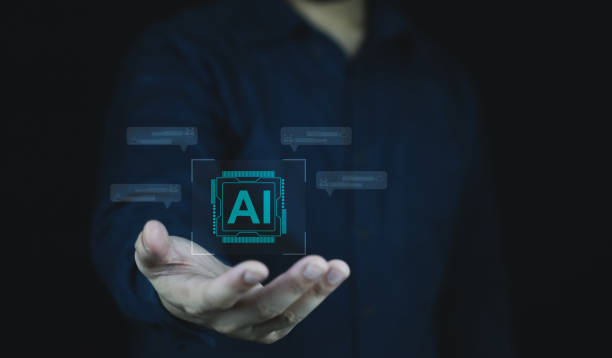
The future of AI assistants is taking shape beyond what we see today, with next-generation innovations promising stunning capabilities.
One of the most important emerging trends is the development of Emotional AI assistants.
These assistants will be able to not only process language but also detect users’ emotions and moods through tone of voice, word choice, and even facial expressions (if equipped with a camera) and adjust their responses accordingly.
This can lead to more natural and empathetic interactions, especially in areas such as mental health and elder care.
We will also witness the emergence of Personalized Autonomous AI Agents.
These AI agents, sometimes referred to as a full-fledged smart assistant, can perform more complex tasks without continuous user input.
For example, a personal AI assistant can independently plan business trips, manage appointments, and even execute financial transactions based on user-defined goals.
This gives users greater autonomy and frees up their time for more strategic tasks.
Multimodal AI is also a key area for innovation.
Next-generation AI assistants will be able to simultaneously process and combine information from various sources (audio, image, text, video).
This capability allows the AI assistant to have a more comprehensive understanding of the world and perform more complex interactions.
For example, a multimodal assistant could analyze an image, describe its content, and in response to a related voice query, provide additional information through a text search.
These advancements will transform the AI assistant into smarter, more efficient, and highly integrated companions in our daily lives.
This future outlook will also come with its specific ethical and security challenges, requiring attention and responsible development.
How to Choose the Best AI Assistant for Your Needs?

Choosing the best AI assistant for individual or organizational needs can be challenging, as the market is full of diverse options with varying capabilities.
The first step in selecting a suitable smart assistant is precisely defining your needs and expectations.
Do you need a voice assistant for smart home control? Or are you looking for a text-based assistant for your website’s customer support? Are scheduling and time management capabilities a priority for you?
One of the most important factors is the assistant’s compatibility with your device and software ecosystem.
If you use Apple products, Siri will be a more natural choice due to its deep integration with iOS and macOS.
For Android users and Google services, Google Assistant will perform better.
If your smart home is based on Amazon Echo devices, Alexa is a suitable option.
This compatibility ensures that the AI assistant easily harmonizes with your other tools and provides a seamless experience.
The assistant’s features and capabilities also play a significant role.
Some assistants are stronger in general information retrieval, while others perform better in controlling smart devices or conducting financial transactions.
It is essential to carefully review the list of capabilities and compare them with your needs.
For example, if you are looking for an assistant for language learning, you should check whether the desired assistant supports this capability.
Data privacy and security policies are also crucial.
Before choosing, study the data collection, storage, and usage policies of the manufacturing company.
Preferably, choose an assistant that gives users more control over their personal data and has high transparency regarding how information is used.
Also, reading user reviews and checking the ratings of the desired AI assistant on various platforms can provide practical and useful insights, helping you make a more informed decision.
Ultimately, the best AI assistant for you is one that best aligns with your lifestyle and specific needs and helps you achieve your goals.
Frequently Asked Questions
| Row | Question | Answer |
|---|---|---|
| 1 | What is an AI Assistant? | It is a software program that performs tasks or services for an individual based on verbal or textual commands. |
| 2 | Name a few examples of AI assistants? | Siri, Google Assistant, Alexa, and Cortana. |
| 3 | How do AI assistants work? | They use Natural Language Processing (NLP), machine learning, and artificial intelligence to understand user input and provide responses or perform tasks. |
| 4 | What can an AI assistant do? | Answer questions, set reminders, play music, send messages, manage calendars, and control smart devices. |
| 5 | What are the benefits of using an AI assistant? | Increased productivity, quick access to information, assistance for individuals with special needs, and simplification of daily tasks. |
| 6 | Are AI assistant responses always accurate? | No, they might sometimes make mistakes or provide outdated information, especially on complex or sensitive topics. |
| 7 | What are the privacy concerns regarding AI assistants? | Recording and storing audio/text data, potential for unauthorized access, and use of data for advertising purposes. |
| 8 | What will the future of AI assistants be like? | Becoming smarter, greater integration with devices and platforms, deeper understanding of emotions, and the ability to perform more complex tasks. |
| 9 | Do AI assistants learn from users? | Yes, through machine learning and collecting data from previous interactions to improve performance and personalize responses. |
| 10 | What is the difference between an AI assistant and a chatbot? | An AI assistant has the ability to perform a wider variety of tasks beyond conversation and is often integrated with an operating system or hardware, whereas a chatbot is primarily designed for conversation or answering specific questions. |
And other services from Rasaweb Advertising Agency in the field of advertising
Smart Marketing Automation: A combination of creativity and technology to increase click-through rates through attractive UI design.
Smart Social Media: An effective tool for user interaction with the help of Google Ads management.
Smart Website Development: An effective tool for user interaction with the help of user experience customization.
Smart Direct Marketing: A combination of creativity and technology for user engagement through SEO-driven content strategy.
Smart Digital Advertising: Designed for businesses seeking campaign management through precise audience targeting.
And over hundreds of other services in the field of internet advertising, advertising consultation, and organizational solutions.
Internet Advertising | Advertising Strategy | Native Advertising
Resources
The Role of AI in Our Digital Life’s Future
The Revolution of AI Assistants in Today’s World
The Impact of AI Assistants on Daily Life
Digital Transformation with AI Assistants
? Is your business ready to soar to the peak of success? Rasaweb Afarin Digital Marketing Agency, by providing comprehensive and professional services, including modern and user-friendly e-commerce website design, targeted digital marketing strategies, and specialized SEO, paves the way for your brand’s growth and prominence.
📍 Tehran, Mirdamad Street, next to Central Bank, Southern Kazeroun Alley, Ramin Alley, No. 6

